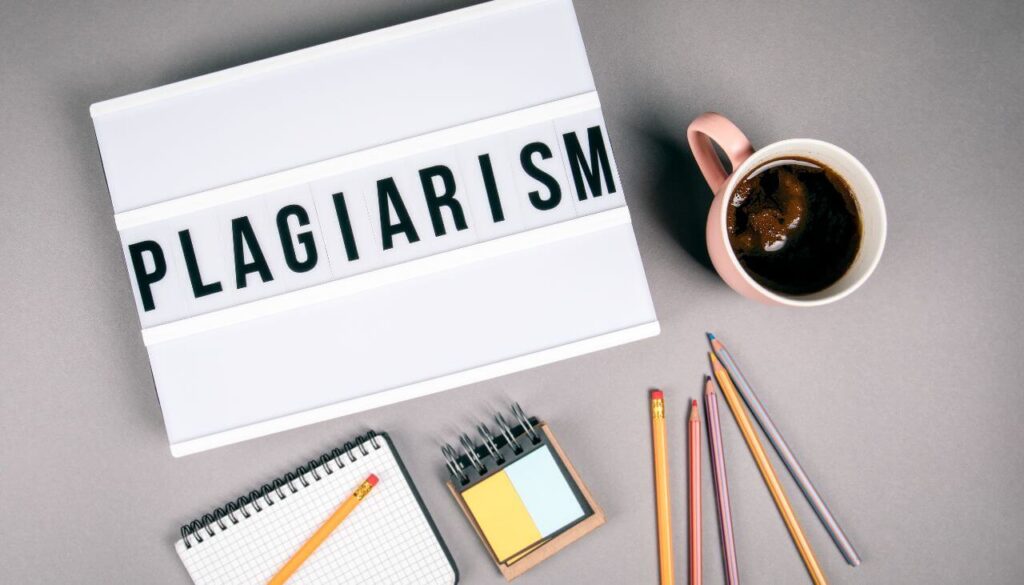On This Page: [hide]
Plagiarism is everywhere nowadays. Sometimes it is hard to prove that you came with your idea on your own. Ensuring that your content is original and free from plagiarism not only upholds ethical standards but also safeguards your credibility and reputation.
It is curious to mention that researchers have found out that when you are thinking of something there could be from 7 to 12 other people on the planet thinking of the same thing simultaneously. We do not know how they conducted the experiment, but we are going to list tools to check content for plagiarism in our post and why you should use such. For starters, this simple activity will become a crucial part of your quality content strategy.
In this article, we will delve into the essential techniques and tools to empower you with the knowledge of how to check content for plagiarism, and therefore – create unique, quality content.

Check for Duplicated Content with Search Operators
Before you start creating content, you should first check if any sort of that content is already on Google and other search engines.
You can use the following search operators in Google Search to check for duplicated content:
- site: – checks a particular website for the keywords you are searching for
- intitle: – checks the Main Heading a.k.a. Title if it contains keywords you type
- allintitle: – same as above, but for the whole combination of words
- inurl: – checks URLs if they have the searched keywords included
- allinurl: – same as above, but checks if all words are in one URL
- intext: – checks a specific text or content if it contains some of the keywords
- allintext: – same as above, but checks if all words are in the text
- AROUND(X) – checks for keywords being in a text, but up to four words apart
- source: – checks for the news source of an article, according to Google News
- inanchor: – finds pages that are being linked to with specific anchor text
- allinanchor: – same as above, but pages linked to all words you seek within anchor text
- inpostauthor: – finds blog posts written by a specific author with the help of quotes
- allinpostauthor: – same as above, but without quotation marks and finds more authors
There were more search operators, but Google has discontinued them over the years. Even with this list, you can run multiple combinations and find exactly what you are searching for, including duplicated content.
The operator intitle helps a lot and you can run longer phrases with most of the commands shown above. However, manually checking all these things takes a lot of time, which brings us to the next section.
Use Plagiarism Checkers
Using Plagiarism checkers will save you time and trouble. Duplicated content is bad for search engines, your website growth and for your own progress.
Here are other useful benefits of using a tool to check content for plagiarism:
- Provides links of the source text
- Saves you time and tool works fast
- Provides the similarity percentage
- Useful for writing original posts
- Helps in checking your paraphrasing
- Staying within regulations and ethical limits
Authors and readers alike will dislike you and shun you from online communities, not to mention that search engines will take actions and limit your website from showing in searches.
Regaining the trust of your audience, your peers and search engines will be hard if you have been on the wrong side of writing and if you have not done a check of your content for plagiarism.
Recommended Plagiarism Tools
Tools that we recommend to check content for plagiarism are Grammarly, Viper, Plagiarisma. They are easy to use and help a lot to check any sort of text content for plagiarism.
The tools usually show both the percentage of unique and duplicated content, what is acceptable and what is not.
Here are some of the most popular tools which allow you to check content for plagiarism:
- Plagiarisma
- Grammarly
- PlagScan
- Paperrater
- Viper
- Quetext
- Copyleaks
- Edubirdie
All of the above are free plagiarism checkers, while some of them have a paid, Premium version, too. They detect content for similarity with other content that is already out there on the Internet.
You can try each one and see which one suits your needs best. They have different user interface, so see with which tool you will check content for plagiarism the fastest.
Conclusion
Plagiarism is a delicate topic. Some people take it too seriously and trust tools too much without even reading the material that is flagged for plagiarism.
If you use somebody’s distinctive idea or copy from them, you should ask for their permission or at least mention them as your references, citations.
Many websites do not quote or reference the information they use that is already public and available. Finding the source could be next to impossible. Quoting a copycat is not the best solution either.
You should aim for a unique text and present it in your own way, rather than relying on somebody else’s ideas and information. Take your time and educate yourself on topics if you have to and try your best to give your own narrative to the world.
